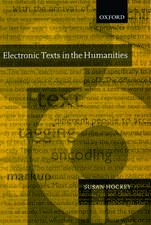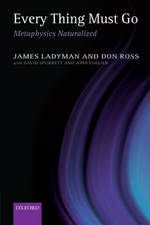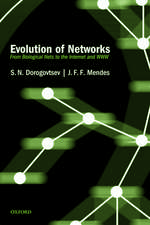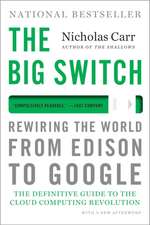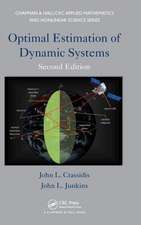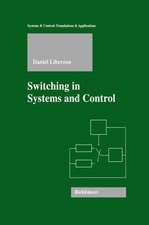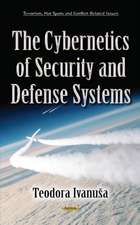Computing: A Historical and Technical Perspective
Autor Yoshihide Igarashi, Tom Altman, Mariko Funada, Barbara Kamiyamaen Limba Engleză Paperback – 27 mai 2014
Through historical accounts, brief technical explanations, and examples, the book answers a host of questions, including:
- Why do humans count differently from the way current electronic computers do?
- Why are there 24 hours in a day, 60 minutes in an hour, etc.?
- Who invented numbers, when were they invented, and why are there different kinds?
- How do secret writings and cryptography date back to ancient civilizations?
Preț: 445.50 lei
Preț vechi: 524.12 lei
-15% Nou
Puncte Express: 668
Preț estimativ în valută:
85.26€ • 88.90$ • 70.86£
85.26€ • 88.90$ • 70.86£
Carte tipărită la comandă
Livrare economică 20 martie-03 aprilie
Preluare comenzi: 021 569.72.76
Specificații
ISBN-13: 9781482227413
ISBN-10: 148222741X
Pagini: 350
Ilustrații: 30 black & white illustrations, 14 black & white tables
Dimensiuni: 156 x 234 x 20 mm
Greutate: 0.5 kg
Ediția:1
Editura: CRC Press
Colecția Chapman and Hall/CRC
ISBN-10: 148222741X
Pagini: 350
Ilustrații: 30 black & white illustrations, 14 black & white tables
Dimensiuni: 156 x 234 x 20 mm
Greutate: 0.5 kg
Ediția:1
Editura: CRC Press
Colecția Chapman and Hall/CRC
Recenzii
"This is a remarkable book. Written by four authors, it consists of a collection of 31 self-contained papers that explain many different concepts related to computing and place them in an historical context. The papers are generally accessible for the layman and relatively short … a compact encyclopedia of computing involving all aspects, such as mathematics, software, and hardware."
—A. Bultheel, The European Mathematical Society, June 2014
"... written at a reasonable level for undergraduates and some (or all) of the chapters could be assigned as supplemental reading for a variety of computer science courses. Summing Up: Recommended. Lower-division undergraduates."
—P. Cull, Oregon State University in CHOICE Magazine, February 2015 Vol. 52 No. 6
Read the full review at http://choiceconnect.org/webclipping/186232/2-2i7b4u54y72-zyzzdoi2_n2p6krpzhopqiqh3j_pe2o4nbqq
—A. Bultheel, The European Mathematical Society, June 2014
"... written at a reasonable level for undergraduates and some (or all) of the chapters could be assigned as supplemental reading for a variety of computer science courses. Summing Up: Recommended. Lower-division undergraduates."
—P. Cull, Oregon State University in CHOICE Magazine, February 2015 Vol. 52 No. 6
Read the full review at http://choiceconnect.org/webclipping/186232/2-2i7b4u54y72-zyzzdoi2_n2p6krpzhopqiqh3j_pe2o4nbqq
Cuprins
The Dawn of Counting. Representation of Numbers. Rational and Irrational Numbers. Prime Numbers. Euclid's Elements. Diophantus of Alexandria and Arithmetica. Secret Writing in Ancient Civilization. The Abacus. Book of Calculation by Fibonacci. Decimal Fractions and Logarithms. Calculating Machines. Solutions to Algebraic Equations. Real and Complex Numbers. Cardinality. Boolean Algebras and Applications. Computability and Its Limitations. Cryptography from the Medieval to the Modern Ages. Electronic Computers. Numerical Methods. Modular Arithmetic. Cybernetics and Information Theory. Error-Detecting and -Correcting Codes. Automata and Formal Languages. Artificial Intelligence. Programming Languages. Algorithms and Computational Complexity. The Design of Computer Algorithms. Parallel and Distributed Computing. Computer Networks. Public-Key Cryptography. Quantum Computing. Index.
Notă biografică
Yoshihide Igarashi, Tom Altman, Mariko Funada, Barbara Kamiyama
Descriere
Requiring no prior knowledge of advanced mathematics or computer science, this self-contained book covers the historical and technical foundation of ancient and modern-day computing. It starts with the earliest references to counting by humans, introduces various number systems, and discusses mathematics in early civilizations. The book guides readers all the way through the latest advances in computer science, such as the design and analysis of computer algorithms, artificial intelligence, quantum computing, and more.



